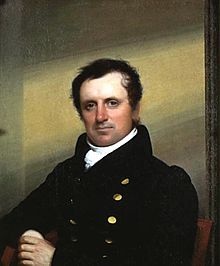
Samuel Langhorne Clemens, known by the pen name Mark Twain, was an American writer, humorist, essayist, entrepreneur, publisher and lecturer. He was praised as the "greatest humorist the United States has produced," with William Faulkner calling him "the father of American literature." His novels include The Adventures of Tom Sawyer (1876) and its sequel, Adventures of Huckleberry Finn (1884), with the latter often called the "Great American Novel." Twain also wrote A Connecticut Yankee in King Arthur's Court (1889) and Pudd'nhead Wilson (1894), and co-wrote The Gilded Age: A Tale of Today (1873) with Charles Dudley Warner.

James Fenimore Cooper was an American writer of the first half of the 19th century, whose historical romances depicting colonial and indigenous characters from the 17th to the 19th centuries brought him fame and fortune. He lived much of his boyhood and the last fifteen years of life in Cooperstown, New York, which was founded by his father William Cooper on property that he owned. Cooper became a member of the Episcopal Church shortly before his death and contributed generously to it. He attended Yale University for three years, where he was a member of the Linonian Society.
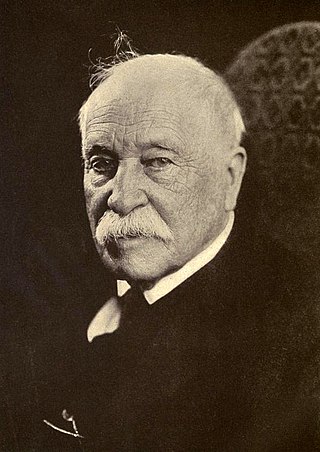
William Dean Howells was an American realist novelist, literary critic, and playwright, nicknamed "The Dean of American Letters". He was particularly known for his tenure as editor of The Atlantic Monthly, as well as for the novels The Rise of Silas Lapham and A Traveler from Altruria, and the Christmas story "Christmas Every Day," which was adapted into a 1996 film of the same name.
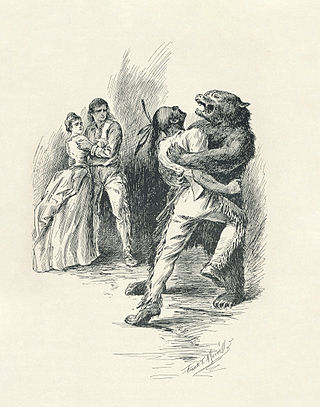
The Last of the Mohicans: A Narrative of 1757 is a historical romance novel written by James Fenimore Cooper in 1826. It is the second book of the Leatherstocking Tales pentalogy and the best known to contemporary audiences. The Pathfinder, published 14 years later in 1840, is its sequel; its prequel, The Deerslayer, was published a year after The Pathfinder. The Last of the Mohicans is set in 1757, during the French and Indian War, when France and Great Britain battled for control of North America. During this war, both the French and the British used Native American allies, but the French were particularly dependent, as they were outnumbered in the Northeast frontier areas by the British. Specifically, the events of the novel are set immediately before, during, and after the Siege of Fort William Henry.
The genre of Menippean satire is a form of satire, usually in prose, that is characterized by attacking mental attitudes rather than specific individuals or entities. It has been broadly described as a mixture of allegory, picaresque narrative, and satirical commentary. Other features found in Menippean satire are different forms of parody and mythological burlesque, a critique of the myths inherited from traditional culture, a rhapsodic nature, a fragmented narrative, the combination of many different targets, and the rapid moving between styles and points of view.

Edward Dowden was an Irish critic, professor, and poet.

An Essay on Criticism is one of the first major poems written by the English writer Alexander Pope (1688–1744), published in 1711. It is the source of the famous quotations "To err is human; to forgive, divine", "A little learning is a dang'rous thing", and "Fools rush in where angels fear to tread".
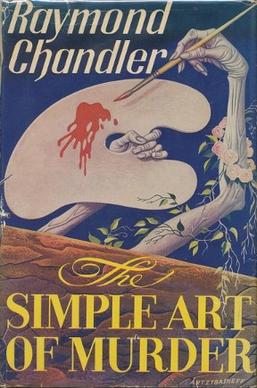
The Simple Art of Murder is the title of several quasi-connected publications by hard-boiled detective fiction author Raymond Chandler:

The Leatherstocking Tales is a series of five novels by American writer James Fenimore Cooper, set in the eighteenth-century era of development in the primarily former Iroquois areas in central New York. Each novel features Natty Bumppo, a frontiersman known to European-American settlers as "Leatherstocking", "The Pathfinder", and "the trapper". Native Americans call him "Deerslayer", "La Longue Carabine", and "Hawkeye".

Van Wyck Brooks was an American literary critic, biographer, and historian.
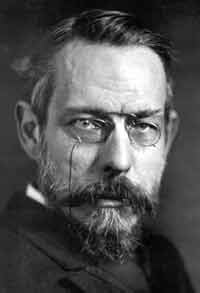
James Brander Matthews was an American academic, writer and literary critic. He was the first full-time professor of dramatic literature at Columbia University in New York and played a significant role in establishing theater as a subject worthy of formal study by academics. His interests ranged from Shakespeare, Molière, and Ibsen to French boulevard comedies, folk theater, and the new realism of his own time.

Thomas Raynesford Lounsbury was an American literary historian and critic. He was born in Ovid, New York on January 1, 1838. He graduated from Yale College in 1859 with a B.A. and received a M.A. from Yale University in 1887. He later received honorary degrees from Yale University, Harvard University, Lafayette College, Princeton University, and Aberdeen College. He enlisted in the 126th New York Volunteers in 1862 and served in the Civil War as a first lieutenant.

The Deerslayer, or The First War-Path (1841) was James Fenimore Cooper's last novel in his Leatherstocking Tales. Its 1740–1745 time period makes it the first installment chronologically and in the lifetime of the hero of the Leatherstocking tales, Natty Bumppo. The novel's setting on Otsego Lake in central, upstate New York, is the same as that of The Pioneers, the first of the Leatherstocking Tales to be published (1823). The Deerslayer is considered to be the prequel to the rest of the series. Fenimore Cooper begins his work by relating the astonishing advance of civilization in New York State, which is the setting of four of his five Leatherstocking Tales.
"To the Person Sitting in Darkness" is an essay by American author Mark Twain published in the North American Review in February 1901. It is a satire exposing imperialism as revealed in the Boxer Uprising and its aftermath, the Boer War, and the Philippine–American War, expressing Twain's anti-imperialist views. It mentions the historical figures Emilio Aguinaldo, William McKinley, Joseph Chamberlain, William Scott Ament and others, and fueled the Twain–Ament indemnities controversy.
American literary regionalism, often used interchangeably with the term "local color", is a style or genre of writing in the United States that gained popularity in the mid-to-late 19th century and early 20th century. In this style of writing, which includes both poetry and prose, the setting is particularly important and writers often emphasize specific features, such as dialect, customs, history and landscape, of a particular region, often one that is "rural and/or provincial". Regionalism is influenced by both 19th-century realism and Romanticism, adhering to a fidelity of description in the narrative but also infusing the tale with exotic or unfamiliar customs, objects, and people.
The Knickerbocker Group was a somewhat indistinct group of 19th-century American writers. Its most prominent members included Washington Irving, James Fenimore Cooper and William Cullen Bryant. Each was a pioneer in general literature—novels, poetry and journalism.
The Californian was a San Francisco literary newspaper published weekly from May 28, 1864 until February 1, 1868.

Samuel Langhorne Clemens , well known by his pen name Mark Twain, was an American author and humorist. Twain is noted for his novels Adventures of Huckleberry Finn (1884), which has been called the "Great American Novel," and The Adventures of Tom Sawyer (1876). He also wrote poetry, short stories, essays, and non-fiction. His big break was "The Celebrated Jumping Frog of Calaveras County" (1867).

The Carlyle–Emerson correspondence is a series of letters written between Thomas Carlyle (1795–1881) and Ralph Waldo Emerson (1803–1882) from 14 May 1834 to 20 June 1873. It has been called "one of the classic documents of nineteenth-century literature."

